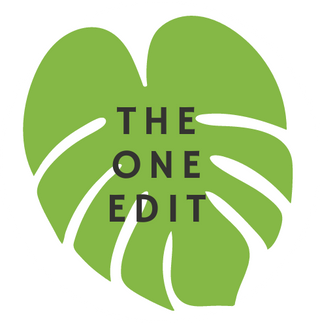Lyocell is making waves in the sustainable fashion market. As sustainability and slow fashion begin to take centre stage among consumer habits, fashion brands look for more ethical materials to use in their clothing. We’re taking a look into what lyocell is, what it’s made of, and what it means for the future of fashion.
What You'll Learn:
- What is Lyocell?
- What is Lyocell fabric made from?
- What makes Lyocell sustainable?
- Brands using Lyocell

What is Lyocell?
Lyocell is a super-soft eco-friendly fabric made from wood pulp. It is being used as Lyocell fabric is used in clothing, underwear, towels and more. Lyocell is a form of rayon, which is a synthetic fibre made from regenerated forms of cellulose from natural sources.
Although Lyocell was invented in the 1970’s it has made a popular reappearance in recent years as fashion brands look into more sustainable practices and the shift in consumers holding brands accountable for their impact on the environment.
You may also hear the word ‘Tencel’ used around sustainable fabric made from wood pulp. The truth is the two words are interchangeable and the fabrics are chemically identical. Tencel is simply a brand name of Lyocell developed in the UK in the 1980s.

What is Lyocell fabric made from?
Lyocell is made from wood pulp. This means wood, usually oak, birch or eucalyptus, is cut into small coin-like pieces and ground down into a pulp. Then a chemical is added in order to dissolve the pulp. This non-toxic chemical is amine oxide. This makes a sticky, viscous liquid called cellulose. This mixture is then filtered and pumped into something called a ‘spineret’. This process then sees the filtered mixture spun very quickly. During this spinning, the cellulose is turned into long, thin fibres. These are the Lyocell fibres that are then used to make the Lyocell fabric.
Lyocell, though similar to Rayon, is more efficient, produces less waste, and the result is a product that is less synthetic than rayon. Lyocell can be blended with other fabrics and fibres in order to increase their strength and help garments last longer. This will mean the fabric is no longer compostable, but by making the blended material stronger, in theory the items will last longer and not end up in landfill.

What makes Lyocell sustainable?
Lyocell is considered sustainable for many reasons. For one it is made from wood, a natural and renewable resource. The fact that Lyocell fabric is made from wood therefore makes it biodegradable and compostable. This reduces the amount of clothes that could end up in landfill.
Additionally, because Lyocell is made using a “closed loop” process, it is more environmentally friendly. Unlike for viscose and rayon, this closed loop process means that the chemicals used in production do not get released into the environment. This process also uses non-toxic amine oxide which can be re-used again once the cycle is finished.
The cultivation of the trees necessary for Lyocell production does not require irrigation or pesticides. This means the resulting fabric is much less toxic and requires less water and pesticides than a fabric like cotton, even Better Cotton Initiative cotton. Whether a sustainable fashion brand or not, more and more brands are looking to increase their sustainability, both in their charitable output and in the fabrics they use to make their products.

Brands using Lyocell
Many brands are using Lyocell fabric to increase their use of eco-friendly materials and respond to the expectations of consumers that they will address their impacts on the planet. Lyocell is just one way brands can increase their sustainability and make a movement towards slow fashion. Some brands using Lyocell are:
- Ecoalf
- People Tree
- Patagonia
- Tentree
Brands such as Ecoalf use Lyocell fabric (or tencel) to make garments in line with their sustainable commitments. The B-Corp company have commitments to reach within their production in order to maintain their B-Corp status and stay in line with their eco values. People Tree also use Lyocell from non-controversial sources in their garments, and conduct regular assessments to maintain the sustainability of the supply.
Popular brands that use Lyocell include Patagonia, a well known activist outdoor clothing brand, and Tentree, a Canadian apparel brand that plants 10 trees for every purchase.

Lyocell for the future
Lyocell is often used as a substitute for cotton or silk. Where cotton uses large amounts of water, and silk uses animal products, Lyocell can be a more eco-friendly and animal free alternative. The Lyocell fabric itself feels like soft cotton so it makes a useful substitution. Lyocell is a strong fabric and so it results in more hard-wearing garments, which help to add to the sustainability of the pieces because they will in theory last longer than cotton ones.
Whether you’re looking to update your wardrobe or learn a little more about what fabrics brands can use to reduce their negative impacts, choosing brands who use Lyocell is a great place to start.

